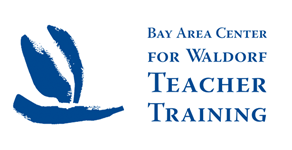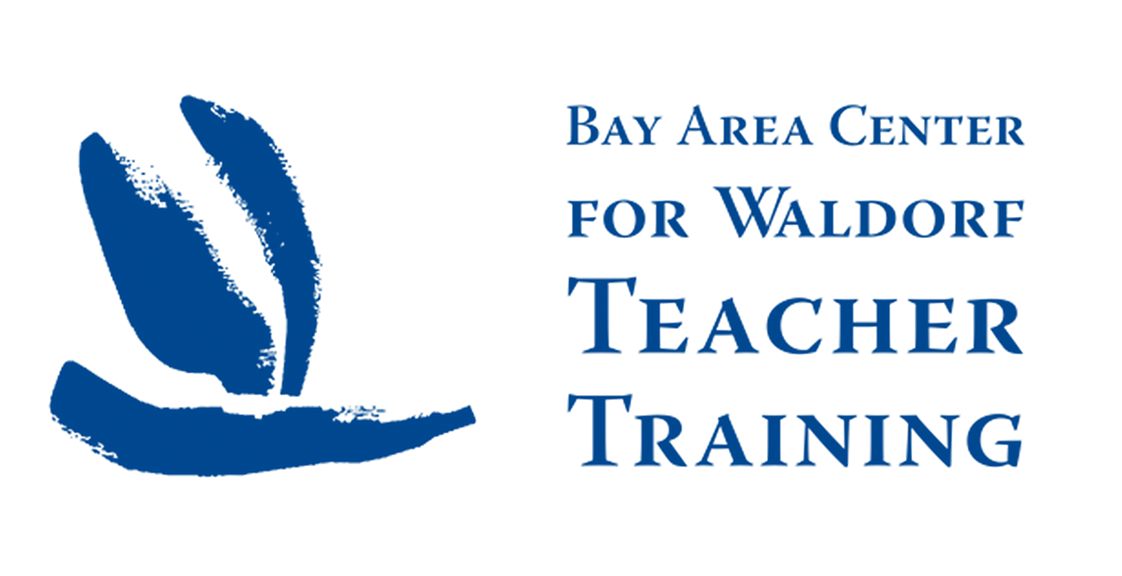Dear BACWTT Students, Alumni, Friends and Colleagues,
Here is the verse from the Calendar of the Soul for this week:
Verse 29
To fire thinking’s radiance
Forcefully within myself
Find meaning in experience
From world spirit’s fount of strength
For me is summer’s heritage
Is autumn’s calm and winter’s hope.
I hope you notice that both last week’s verse and this week’s end with the word “hope.” Last week’s verse brought to us an unusual relationship to hope – that something we normally think of as completely positive could actually do harm, be laming. We had a great discussion in the Foundation Studies class last weekend about this theme – and one important idea that was shared was that hope can take us out of the present, that it may encourage us to live too much and too far into the future to see the tasks in front of us and the steps we need to take to make progress.
This week, Steiner puts this idea about hope into a context of passing time: heritage, calm and hope; past, present and future; summer’s heritage, autumn’s calm and winter’s hope. There is something right and healing in this sequence and its connection to the seasons. The summer is full of the nourishing forces of the Sun and the Earth – they stream to us from the abundance of the past. In the depths of winter, we look forward to the coming spring (as our ancestors have done for millennia), awaiting the return of the forces of life that can break the hold of cold and the dark. In the autumn, that is now, we strive to find calm – that is the seasonal task. It is not a given or a byproduct; it is what we must work for in this moment.
The Calendar of the Soul this week expresses the goal of this moment in the context of these archetypes of summer, autumn and winter, and is trying to help us feel rightly placed in this stream of inner processes. Here in California, we are caught in a push-pull of summer-winter. Each night it cools off and the nights are lengthening, and yet, each day it heats up again to summer-like temperatures. Rain still feels a long way off! Calmness would be really nice too, but also feels a long way off!
Last week, I was able to join the 3rd Year class on child development with Dr. Carmen He-ring. To paraphrase, she said that the teacher in today’s world has to take up the task of ensuring that children have sufficient healthy movement. We cannot rely on there being enough of or the right kind of movement in the home and outside of school, and therefore it falls into the educational realm of the teacher. Something to add to our basket!
It was my pleasure to spend a day at Marin Waldorf School last week. I arrived early enough to enjoy the landscape, the clean air and the morning sunlight streaming through the branches of the magnificent oaks. There, set amongst this beautiful piece of nature, were all the outdoor classrooms – still empty and quiet before the children arrived! I couldn’t help but think, “Why would they want to go back inside those boxy 1960’s classrooms with artificial lighting when they have this remarkable natural asset just out the door?”
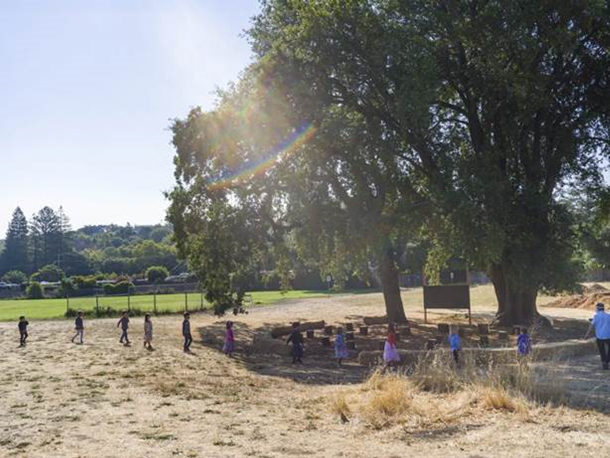
We have known in Waldorf education for years that the children need to be outdoors in nature more, but somehow it’s just too good being indoors with a great chalkboard behind us and so many interesting things to learn. It’s really hard to make the shift to another way of teaching and learning, to adjusting our priorities. Well, this pandemic is helping us to make the shift.
During that same day, sitting with a class in their outdoor room, with the sunlight streaming through redwood branches, feeling the warmth, the air and the scent of the trees and the straw-bale walls, I also realized how much our senses are being stifled and deprived when we are working on a screen. So many aspects of our 12 senses are asleep, unutilized when we sit in a chair, with the light of the screen and the minimal touch of the keyboard. Today in education, the contrast is becoming stronger and more delineated – outdoors in nature with our full senses and our range of movement engaged… or indoors with the screen into a setting that leaves a vast proportion of the subtle aspects of what makes us human undernourished. As adults we can perhaps get away with it, but for the young, growing bodies and minds of children, this screen environment is going to have negative consequences.
So, I guess we have to put even more things into the basket of the teacher:
• Cultivating healthy movement
• Cultivating a healthy relationship with nature
Cultivating the health of the senses
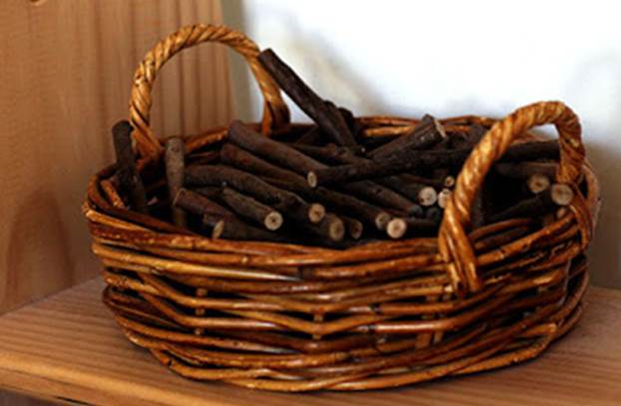
And there is another aspect that we need to fit into this already full teacher’s basket – “calm” – as mentioned in the verse this week. This is also not new, but during this time of shifting priorities, the ability of a teacher to create a place of calm for the child has become more important.
In his book, Ways into Christian Meditation (Chapter 2, “Calm – How is it Achieved?”), Bastiaan Baan writes:
“Without deep inner calm, deeper than one usually imagines, meditation is impossible. But how do we get there in a time that is noisier and more restless than ever? How do we manage to close ourselves off from all the noise about us and become inwardly silent?…It is illusion to think that this state is easy to obtain. Even if we find a place that is really quiet there is so much noise in most people today that they can’t bear the silence.”
He gives an example of a practice:
“I have, for example, helped myself in a period of extreme work pressure by now and then sitting in a park and observing the movement of water in a fountain. When you follow the play of water from beginning to end you come without effort into a state of steaming, relaxed rest: water that spouts up with force and power from the depth of a pond spreads out in sparkling silvery colors, reaches its highest point, then falls back into the depths in fantastic playful forms……this source is great and inexhaustible; it is nature itself which literally has not yet become exhausted, even today in spite of the way we handle and mishandle it. While writing this book I do not have a water fountain at hand; I must limit myself to the Hyacinth emerging from its bulb on my worktable. When I follow its subtle growth movements day by day and let my eyes rest on the forms and colors, calm descends upon me by itself. This calm is present not only in nature but also in part of our very being. At the surface of our soul life restlessness and agitation usually reign just as the surface of water is almost always in movement. In the depths of the soul there is calm just as water moves slowly and quietly in its depths. These inner depths become accessible to us through deep impressions we receive. However it takes time for such impressions to touch our soul: a poem that touches us so deeply that we can repeat it; a piece of music which, after hearing it, we carry within us for a long time. In brief, on this inward path we have need of an inner culture, while on the outward path we need outer, visible nature.”
This is a really helpful picture that offers some guidance at this time – in working to achieve calm – to develop, strengthen and care for activities in these two directions:
• The outer path – living strongly through the senses into visible outer nature
• The inner path – living strongly into the impressions made upon our inner life
Bastiaan ends this chapter with a list of “practical suggestions for exercises to achieve calm”:
• Look for sense impressions that have a restorative effect. You can strengthen and process the impressions by drawing or painting them.
• Find a quiet spot in nature with which you gradually become familiar by watching and listening there in all seasons.
• Try to live for some time with a poem, a song, a verse or psalm that appeals to you.
• Certain paintings have a calming and harmonizing effect.
• Limit sense impressions that create too much unrest and actually agitate.
• Identify in your memory a day in your life that you spent in rest, harmony and joy. Visualize that day step by step, review the sense impressions again.
• Carefully prepare for the night. No abundance of sense impressions before lying down to sleep.
Take the time to begin the day quietly upon waking in the morning.
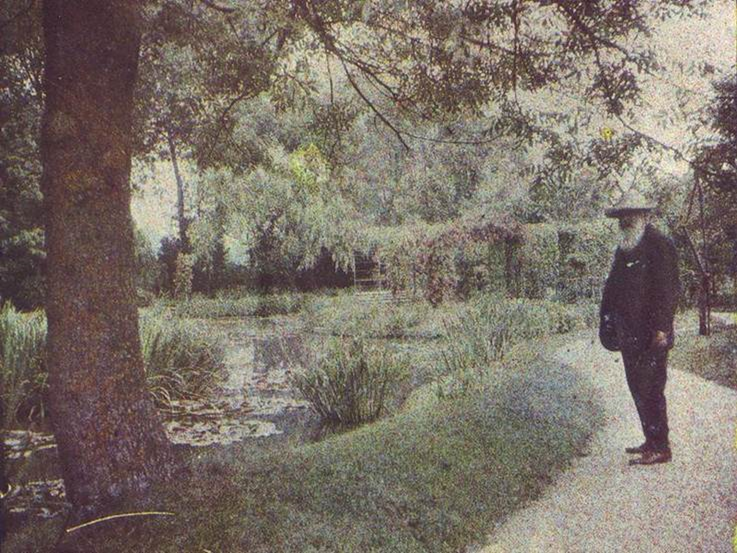
With these thoughts of water and plants, of being out in nature and being touched deeply by inner experiences, of strengthening impressions by painting them, French artist Claude Monet comes to mind. For 43 years, from 1883 until his death in 1926, he worked tirelessly in his garden in Giverny, creating and composing the pond and plants that he then famously painted.
We tend to isolate aspects of life. Monet was an artist – we think about him and what he did if we are interested in art! But he was also a gardener and deeply connected to and touched by nature. He was also a scientist in his ability to observe and in his precision about what was reaching his eye, retina and brain. His artistic creations are the result of deep inner experiences – they are his meditations on color, form and light.
When we isolate Monet into a category of “artists,” then we miss an opportunity to see what he could offer us in the way of education. We could probably learn a lot from Monet right now about how to be learning outdoors. Giverny was his outdoor classroom. Claude Monet said about his studio, “I never had one and personally I don’t understand why anyone would want to shut themselves up in some room. Maybe for drawing, sure, but not for painting.”
We could also be looking more widely, outside of our usual circle, to find examples of how we as teachers can hold all these things in our basket.
Ken
Kenneth Smith
Director
BACWTT
